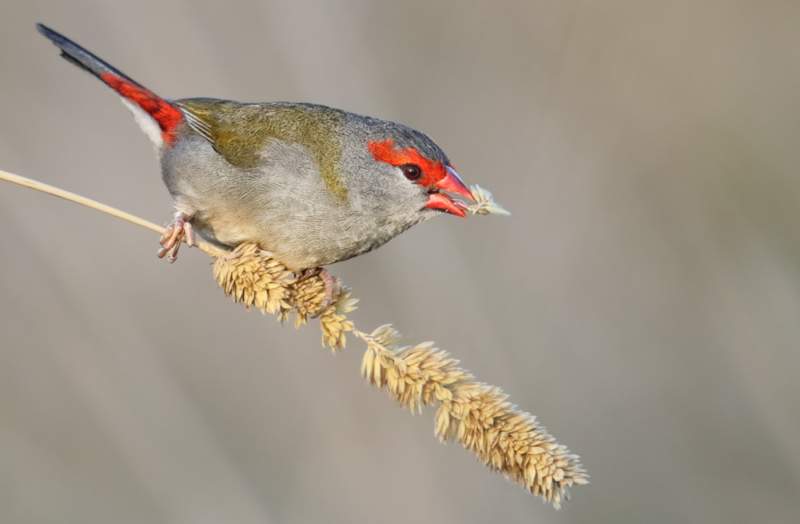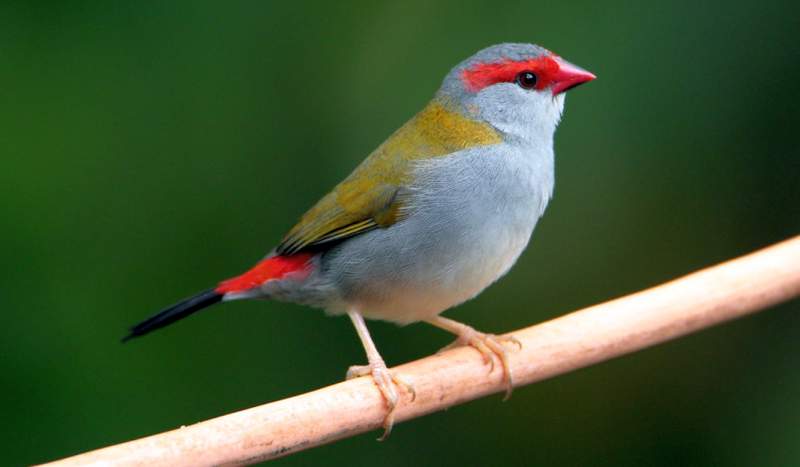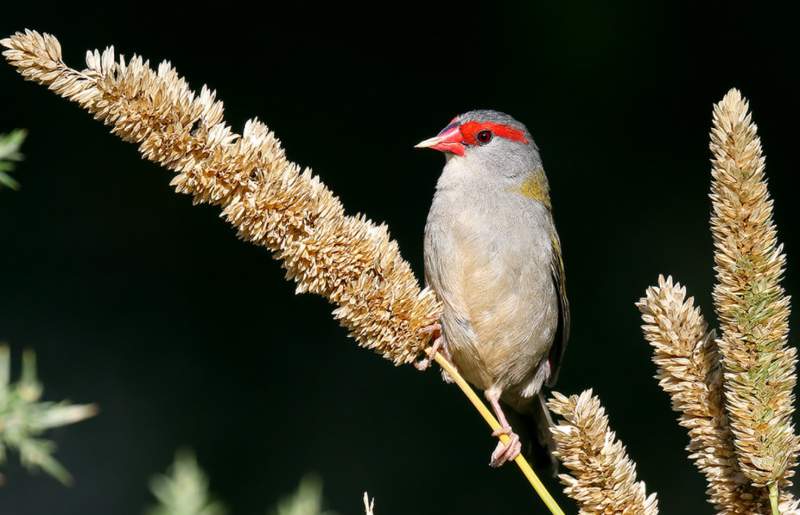Description:
The Red-browed Finch (Neochmia temporalis) or Waxbill is Australia’s most familiar finch. The species is widespread along the eastern seaboard and has now been introduced near Perth. The red-browned finch is common in aviaries. In captivity, red-browed finches may hybridize with star finches, crimson finches, and zea finches.
Habitats:
The Red-browed Finch is an estrildid finch that lives in wetter woods and open forests, where there are patches of seeding grasses and herbage. In search of food, it often wanders into parks and gardens in the local area. As one of the most social blood finches, it also builds roosting nests that are small round balls located in shrubs without entrances or linings.
Several pairs of Red-browed Finches will nest in the same bush, starting off as small flocks and then expanding into larger flocks after breeding. Strong bonds exist between pairs. They mate permanently and remain close year-round, preening each other and roosting together at night, often with others, in roost nests. When feeding and flying, flock members keep in touch through constant high-pitched calls.
In strong, slightly undulating flight, they fly low as a group to shrubbery if disturbed, flirting with the tail as they land.

Courtship:
The male holds a grass stem at one end and, standing stiffly erect, jumps up and down with his tail pointed towards the female. Her head is thrown up as he does as they close. Following copulation, the male crouches down and rocks up and down while singing and wiping his bill rapidly.
Feed:
The Red-browed Finch feeds mainly on ripe and half-ripe seeds of grasses and herbs, with fruit and insects supplemented when they breed. Rather than catching insects in the air, insects are collected from foliage. Birds forage on the ground, hopping about here and there, but occasionally they balance on swaying stalks to peck at seed heads. They frequently visit water to drink by scooping, which breaks up their feeding.
Alternative names
It is also known as Red-browed Firetail, Waxbill, Red-brow, and Temporal Finch.
Size:
An average Red-browed Finch measures 110-120 mm in length.
Identification:
Its back and wings are olive-green; its rump and upper tail coverts are crimson; its tail is dusky brown. There is an olive-yellow patch on the side of the neck, lores and eyebrows are crimson; head is mid-grey. All underparts are pale grey-buff, including the throat, ear coverts, and underparts of the legs. The color of the eye is red-brown. There is a black line at the top and bottom of the bill and a red line at the sides. Flesh-colored feet. Female eyebrows are thinner than male eyebrows. Its rump is dull crimson; its brow plain; and its underparts ash-brown. The bill is black.

Call & Song
Its call is a piercing high-pitched repeated sseee-seee, accompanying most movements, both in contact and in alarm. Therefore, the song simply repeats call notes rhythmically.
Nesting and Breeding:
Nesting and breeding occur from August to January in the south, and from December to April in the north. With tunnel entrance at side, sometimes only a hood, made from stiff green and/or dry grass, occasionally bark and leaves; 200-280 mm long, 140 mm high, 100-130 wide; lined with white feathers; found in thorny bushes up to 8 m away.
Eggs:
Red-browed Finch lays 4 to 6 pure white eggs; oval shape, about 16 x 12 mm.
Incubation:
Both sexes go through incubation for about two weeks. In about 15-17 days, the young fledge. During the day, both partners share incubation and brooding responsibilities, and at night, they roost together in the nest. It is unique to Australian grass finches to beg with quivering wings while fed inside the nest.
Distribution:
Red-browed Finch’s distribution ranges from the Mt Lofty Ranges in South Australia northwards to the Cape York Peninsula on rain-forest edges in grassy areas interspersed with dense shrubberies.It was introduced to the Darling Ranges in Western Australia.
Races:
Two, probably three races.
Read More – Diamond Finch (Stagonopleura guttata)







